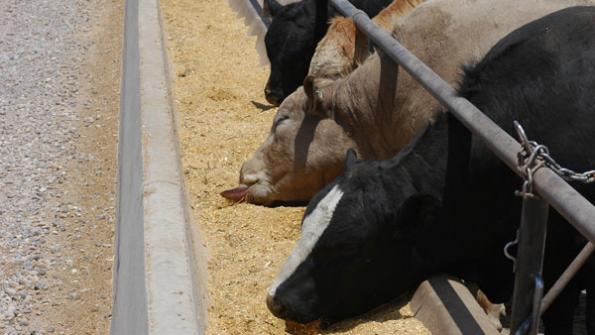There’s been a lot of talk over the years about improving cattle performance. So has the industry actually made any progress?

The consumer drives the dollar from the top down. Yet, in a segmented industry, the seedstock operator and cow-calf producer make the decisions about what the consumer gets to eat.
They also make the decisions about what the cattle feeder gets to feed and what the packer gets to harvest, says Dan Dorn with Decatur County Feedyard at Oberlin, KS. That means, he says, that sometimes he gets to weave a silk purse from the hair of a sow’s ear.
Said another way, in spite of some very impressive advances in genetic evaluation, genomic testing and opportunities in value-added marketing, there are still a lot of commodity cattle out there – cattle that will likely wind up in a feedyard and ultimately on someone’s plate.
Decatur County Feedyard runs a Profit Audit, which is a five-year rolling average with around 200,000 steers and heifers in the data base. It’s basically an estimate of the return to the ranch, adjusted for weight (adjusted to 625 lbs. in-weight) and current corn and fed cattle prices.
When the feedyard looks at its profit drivers, he says 43% comes from feed efficiency; 39% in grid value and 18% in carcass weight. Yet, are those market signals being met?
Using the Profit Audit figures, he says, in the second quarter of 2008, their average in-weight was 637 lbs. Pay weight was 1,247 lbs. with 186 days on feed. Death loss, 2.3%; average daily gain, 3.28; conversion was 5.54:1 on a dry matter basis; treatment cost was $6/head; average ribeye was 13 sq. in.; average yield grade was 3; hot carcass weight was 793 lbs.; and the carcasses graded 0.3% Prime, 10% upper Choice, 39% Choice; 48% Select, 2.3% no roll.
In the second quarter of 2011, in-weights went down to 602 lbs. and pay weights dropped 3 lbs. “Death loss stayed the same, average daily gain went up just a tick, treatment went down. We stayed the same from 2008 to 2011 on ribeye size, we lost 3 lbs. on carcass weight; we went up 1% in Prime but we went up to 27% in upper Choice and we knocked off about 8% of our YG 4s,” Dorn says. He notes that the 2011 carcass data was generated by instrument grading, whereas the 2008 data came from eyeball grading.
So, he asks, have we really made any change? “I don’t know,” he says. “I’m starting to wonder if we have.”
There are cattle that are only worth $550 as an individual animal, while others are worth $1,000. So there’s a huge difference in the types of cattle that feeders deal with, he says. “We’ve got cattle that cost $350/head to feed; then we’ve got others that are $650.” And that difference continues in the packing plant. “There’s a $200 difference at harvest just based on grid values within that population,” he says. “We’ve got to narrow that variation.”
About the Author(s)
You May Also Like



